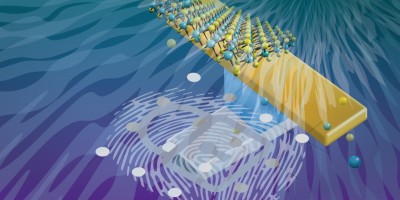This Comment discusses metal–organic frameworks and their progress towards translation in a health-care setting. We explore their prospects in clinical applications, why translation seems slow, and what opportunities and obstacles await as they move towards the clinic.

References
Hao, F., Yan, Z.-Y. & Yan, X.-P. Recent advances in research on the effect of physicochemical properties on the cytotoxicity of metal–organic frameworks. Small Sci. 2, 2200044 (2022).
Moosavi, S. M. et al. Understanding the diversity of the metal-organic framework ecosystem. Nat. Commun. 11, 4068 (2020).
Ettlinger, R. et al. Toxicity of metal–organic framework nanoparticles: from essential analyses to potential applications. Chem. Soc. Rev. 51, 464–484 (2022).
Ehrman, R. N. et al. A scalable synthesis of adjuvanting antigen depots based on metal-organic frameworks. Preprint at https://doi.org/10.26434/chemrxiv-2023-gtl30 (2023).
Chen, X. et al. Formulation of metal–organic framework-based drug carriers by controlled coordination of methoxy PEG phosphate: boosting colloidal stability and redispersibility. J. Am. Chem. Soc. 143, 13557–13572 (2021).
Lu, K. et al. Low-dose X-ray radiotherapy–radiodynamic therapy via nanoscale metal–organic frameworks enhances checkpoint blockade immunotherapy. Nat. Biomed. Eng. 2, 600–610 (2018).
Akhavan-Sigari, R. et al. Porous Cu-MOF nanostructures with anticancer properties prepared by a controllable ultrasound-assisted reverse micelle synthesis of Cu-MOF. BMC Chem. 16, 10 (2022).
Garren, M. et al. Surface-catalyzed nitric oxide release via a metal organic framework enhances antibacterial surface effects. ACS Appl. Mater. Interfaces 13, 56931–56943 (2021).
Wijesundara, Y. H. et al. Carrier gas triggered controlled biolistic delivery of DNA and protein therapeutics from metal–organic frameworks. Chem. Sci. 13, 13803–13814 (2022).
Kumari, S. et al. In vivo biocompatibility of ZIF-8 for slow release via intranasal administration. Chem. Sci. https://doi.org/10.1039/D3SC00500C (2023).
Author information
Authors and Affiliations
Corresponding authors
Ethics declarations
Competing interests
The authors declare no competing interests.
Supplementary information
Rights and permissions
About this article
Cite this article
Tyagi, N., Wijesundara, Y.H., Gassensmith, J.J. et al. Clinical translation of metal–organic frameworks. Nat Rev Mater 8, 701–703 (2023). https://doi.org/10.1038/s41578-023-00608-3
Published:
Issue Date:
DOI: https://doi.org/10.1038/s41578-023-00608-3
- Springer Nature Limited
This article is cited by
-
Reproducibility in research into metal-organic frameworks in nanomedicine
Communications Materials (2024)
-
Development of Aptamer-DNAzyme based metal-nucleic acid frameworks for gastric cancer therapy
Nature Communications (2024)


